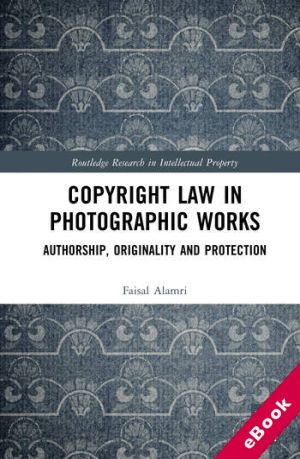
The device(s) you use to access the eBook content must be authorized with an Adobe ID before you download the product otherwise it will fail to register correctly.
For further information see https://www.wildy.com/ebook-formats
Once the order is confirmed an automated e-mail will be sent to you to allow you to download the eBook.
All eBooks are supplied firm sale and cannot be returned. If you believe there is a fault with your eBook then contact us on ebooks@wildy.com and we will help in resolving the issue. This does not affect your statutory rights.
This book presents an original theory of copyright authorship tailored for photographic works, grounded in the concepts of categorical intention, channeled selection, and causation. By addressing the unique dual nature of photography, where mechanical processes intersect with creative choices, it offers a fresh perspective on a longstanding legal challenge.
Through a critical examination of select case law with a focus on Anglo-American law, the book highlights the complexities and inconsistencies in the current copyright protection for photographs due to their dual nature, which exhibits both mechanical and creative characteristics. It argues for moving beyond the conventional one-size-fits-all approach for copyright concepts in favour of adopting a tailored, contextual approach that acknowledges the nature and characteristics of the category of work in question. The book also alludes to emerging technologies such as artificial intelligence and machine learning models, considering their implications for copyright and creative expression. It also discusses how the history of copyright protection of photographic works may illuminate the path toward dealing with conflicts between copyright and perceived mechanical mediums of creative expression.
This book will be of interest to researchers in copyright law and intellectual property law, especially those engaged with the legal treatment of mechanically produced creative works. It offers valuable insights into the evolving relationship between law, technology, and authorship in the digital age.